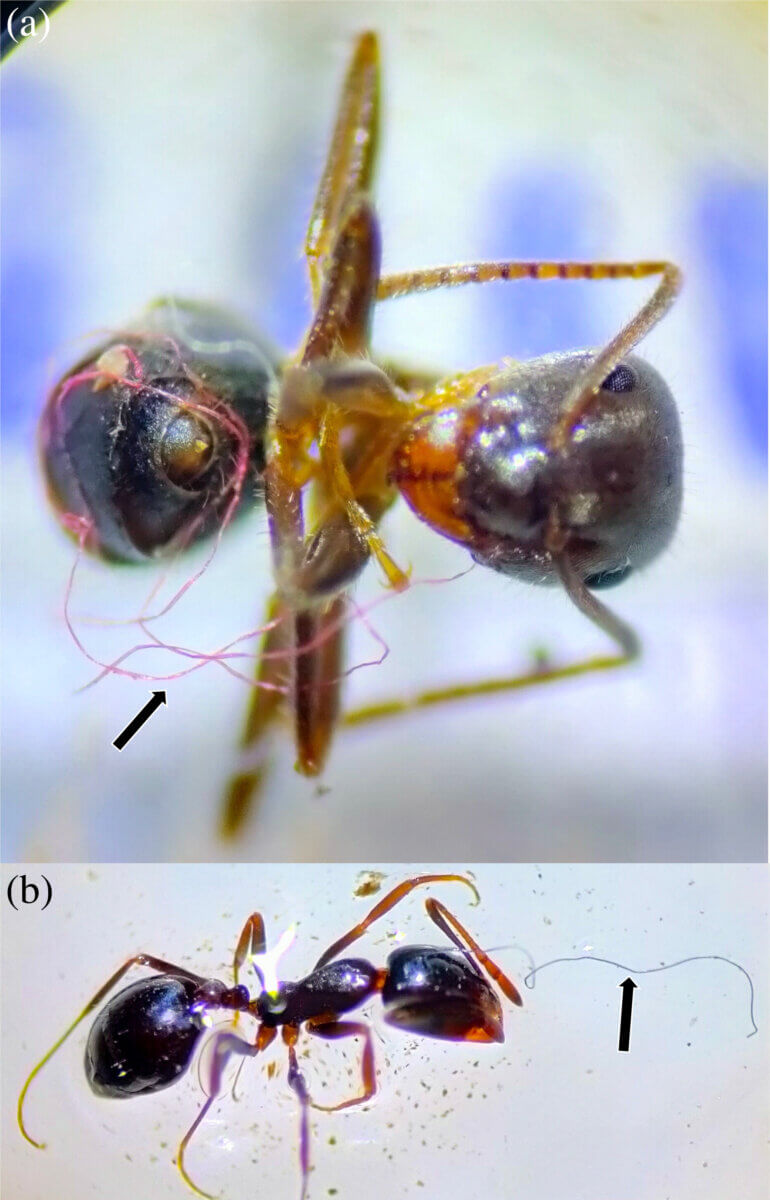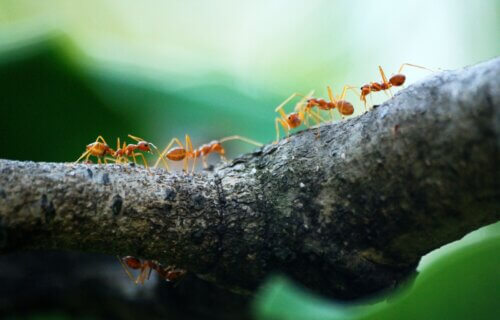MADRID, Spain — Researchers have made the startling discovery that even tiny lifeforms like ants are now ensnared in plastic, marking a grim testament to human pollution.
This alarming observation was made on the Spanish island of La Palma by Armand Rausell-Moreno from the National Museum of Natural Sciences in Madrid. While interning in 2022, Rausell-Moreno identified ants entwined in plastic fibers. He later collaborated with ant specialist J. Manuel Vidal-Cordero and Álvaro Luna, a professor at the European University of Madrid, to delve deeper into this troubling discovery.
Their findings detail how these entrapped ants were predominantly found near hiking paths and roadsides, underscoring the likelihood of the pollution being a direct consequence of human activity.
The team believes that this might be the first documented instance of insects, and potentially other land-dwelling invertebrates, being contaminated by plastic.
“It all started serendipitously. Armand chose ants as the focal point of his project during his internship on La Palma,” says Luna, according to a statement from SWNS. “Upon preliminary examination of his collected samples, he spotted some synthetic material tangled around the ants. Subsequently, J. Manuel Vidal used more refined optical equipment for species identification.”
During a casual conversation, Luna was apprised of these observations, given his involvement in studying the environmental impacts of plastic.
“Recognizing its significance, we sought external validation from a lab experienced in analyzing plastic fibers,” the researcher adds.

The team meticulously considered every stage of data collection and sample processing to rule out the possibility of plastic contamination during the research.
“Both my colleagues were certain that their protocols precluded accidental contamination. The entanglement of plastic around these ethanol-preserved ants suggests that the plastic became tangled during the ants’ movements,” Luca explains, according to SWNS.
To their knowledge, this might be among the first real-world observations of insects or other terrestrial invertebrates getting ensnared in plastic. Luna cited other studies showcasing how certain spiders and bees have incorporated plastic into their shelters and nests, respectively, but emphasized the scarcity of field data outside of controlled lab settings.
“We truly don’t grasp the full scope of this issue. While it’s improbable that the entanglement crisis in terrestrial ecosystems mirrors that of marine ones, we lack concrete data to either confirm or refute this hypothesis,” Luna concludes. “In my opinion, the diminutive size of insects means fewer people encounter or photograph such plastic-related impacts firsthand. Thus, if this is a widespread issue, it has largely flown under the radar.”
The study is published in the journal Ecological Entomology.
You might also be interested in:
- Ants can learn to ‘sniff out’ cancer in patients
- Everyone, play dead! Entire ant colony joins in on stunt to fool predators
- Compounds hiding in plants could be key to cleaning up microplastic pollution
South West News Service writer Dean Murray contributed to this report.


Maybe they like it.
Not surprising considering found in even the deep sea creatures.
ContaminANTS! Not much we can do now just try to behave better though most of the world going the wrong way.